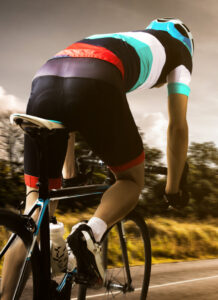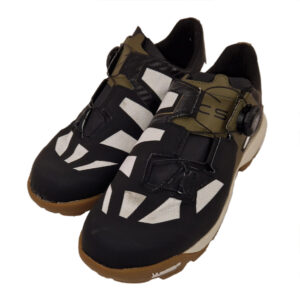Cycling shoes

In cycling, shoes play several important roles. They not only protect the feet but also serve as the interface between the cyclist and the bicycle. Proper shoe fit is essential for effective force transmission from the legs to the cycle.
As with any shoes, tightening them firmly will put pressure on the top side of the foot, and VPECS protects both the dorsal pedal artery and deep fibular nerve from pressure. In cycling, force transmission is also achieved by pulling the feet upwards in the upstroke. This will add extra pressure on the artery and nerve, inflicting even more discomfort.
In cycling, the extensor tendons for the toe are always active when pedaling and prolonged cycling can create an inflammation in the tendon sheats. The tendon sheat to the big toe is especially affected as it rides on top of the foot. This is also protected by VPECS
Cycling shoes and VPECS
Cycling shoes act as a second skin on the foot and provide a firm attachment for the lower limbs to the cycle. These requirements leads to a shoes that creates pressure on the dorsal aspect of the foot.
Below is a video where a cycling shoe withour VPECS is tightened when a doppler is placed on the dorsal pedal artery (do not forget to turn the sound on).
This video demonstrates how the pulsations decrease when the shoe is tightened. At the end of the video, the lacing system is opened and the pulsations return.
The second video demonstrates the same shoe but with a VPECS system in place, and here the pulsations remain the same when the shoe is tightened.
The difference in tone and intensity in the two videos depends on how hard the doppler is pressed to the artery and the also the angle between the doppler and the artery.
The first cycling shoe with VPECS technology has been produced. A mountain bike model was chosen for the first generation. This will now serve as a raw model for further testing.
